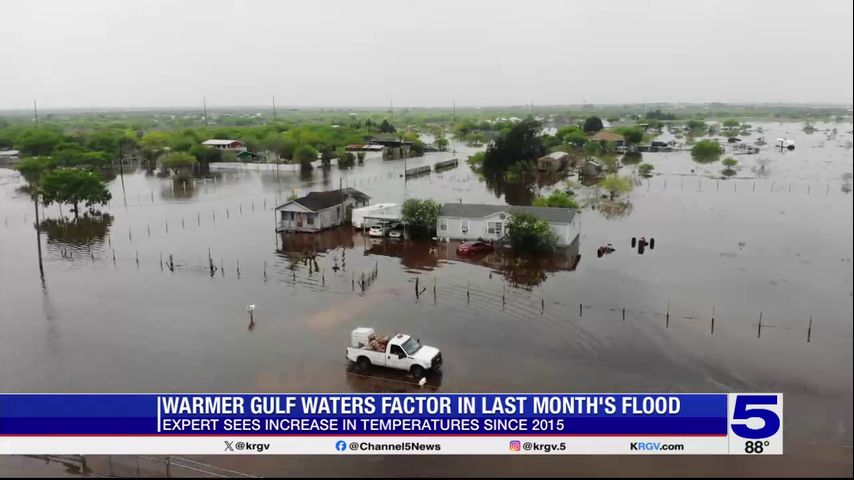Meteorologist discusses how warmer temperatures in the Gulf contributed to historic storm in the Valley
The flooding that occurred following a major storm on March 27, 2025, throughout the Rio Grande Valley broke several records, according to the National Weather Service.
The organization Climate Central, made up of scientists studying climate patterns, said warm waters in the Gulf of Mexico contributed to the rainfall.
“What we can attribute is the above average temperatures of the Gulf of Mexico, the moisture supply that fed into our weather system that created this heavy rainfall event,” meteorologist and Climate Central member Shel Winkley said.
Winkley said heat readings from the National Oceanic and Atmospheric Administration of the Gulf before and after the rain event showed water temperatures were above average for that time of year.
“The sea surface temperatures there were three degrees Fahrenheit above average,” Winkley said.
Heavy rain bands pushed from west to east across the Rio Grande Valley for hours during the storm. The rainfall totals brought more than 20 inches to areas around Harlingen.
READ MORE: Texas’ Rio Grande Valley didn’t see last week’s historic storms coming
Winkley said the moisture that supplied that rainfall evaporated from the Gulf, rose high into the upper atmosphere, and ended up west of the Valley.
"Warmer sea surface temperatures allow for more moisture to be transported from the Gulf, put into the atmosphere, and fed into these weather systems,” Winkley said.
Climate Central said the warming Gulf trend is driven by manmade climate change. According to climate Central. Ever since at least 2015, Gulf temperatures have been hotter than the average day after day.
That trend will be a factor going into the summer months and hurricane season.
"If the atmosphere can hold onto more moisture, it can also release it in a more extreme fashion as well, and not as uniform as we're used to,” Winkley said. “Now we see these big extremes, like what we experienced there in South Texas."
Data shows Gulf temperatures are above average more often now, affecting how much rain we get.
Watch the video above for the full story.





